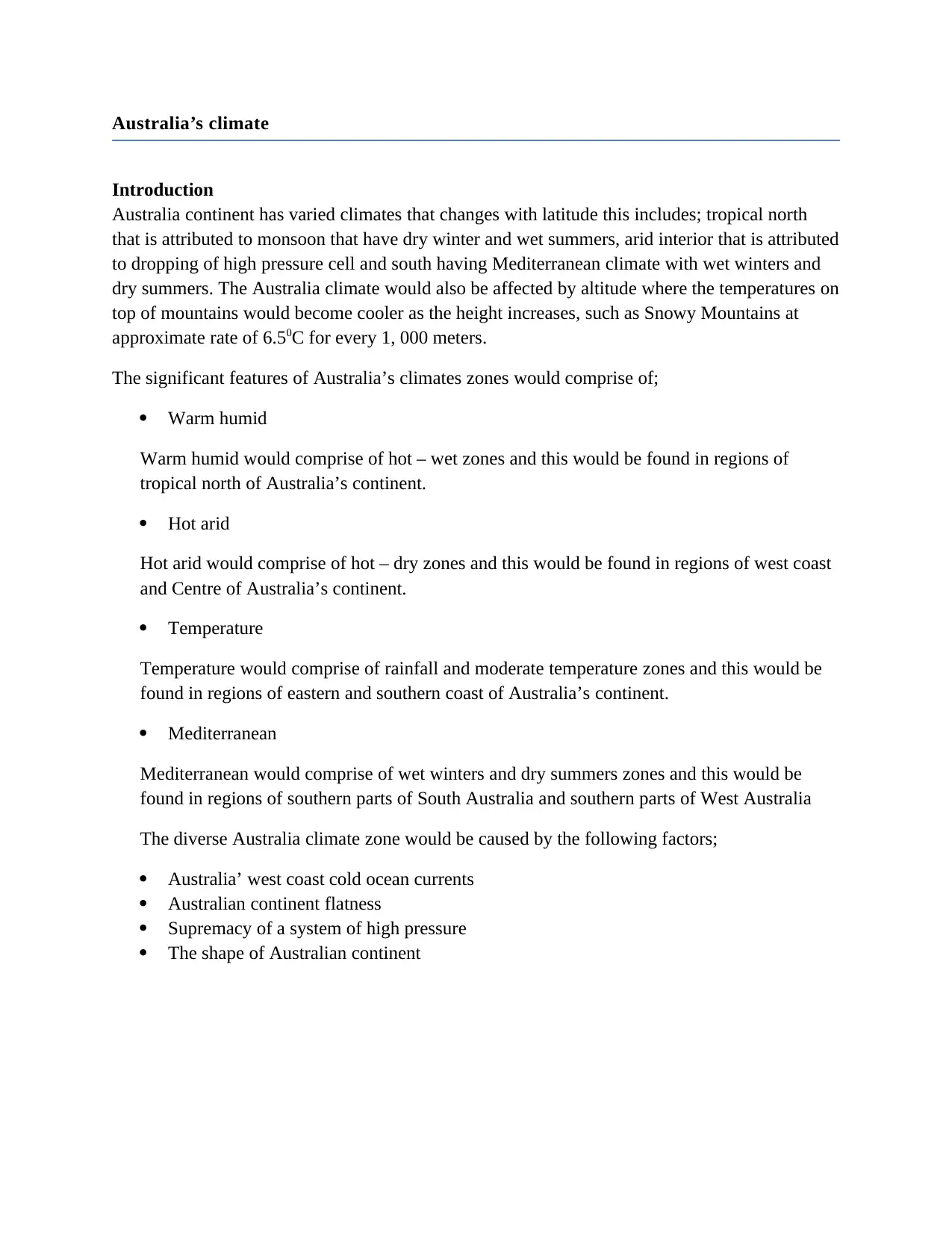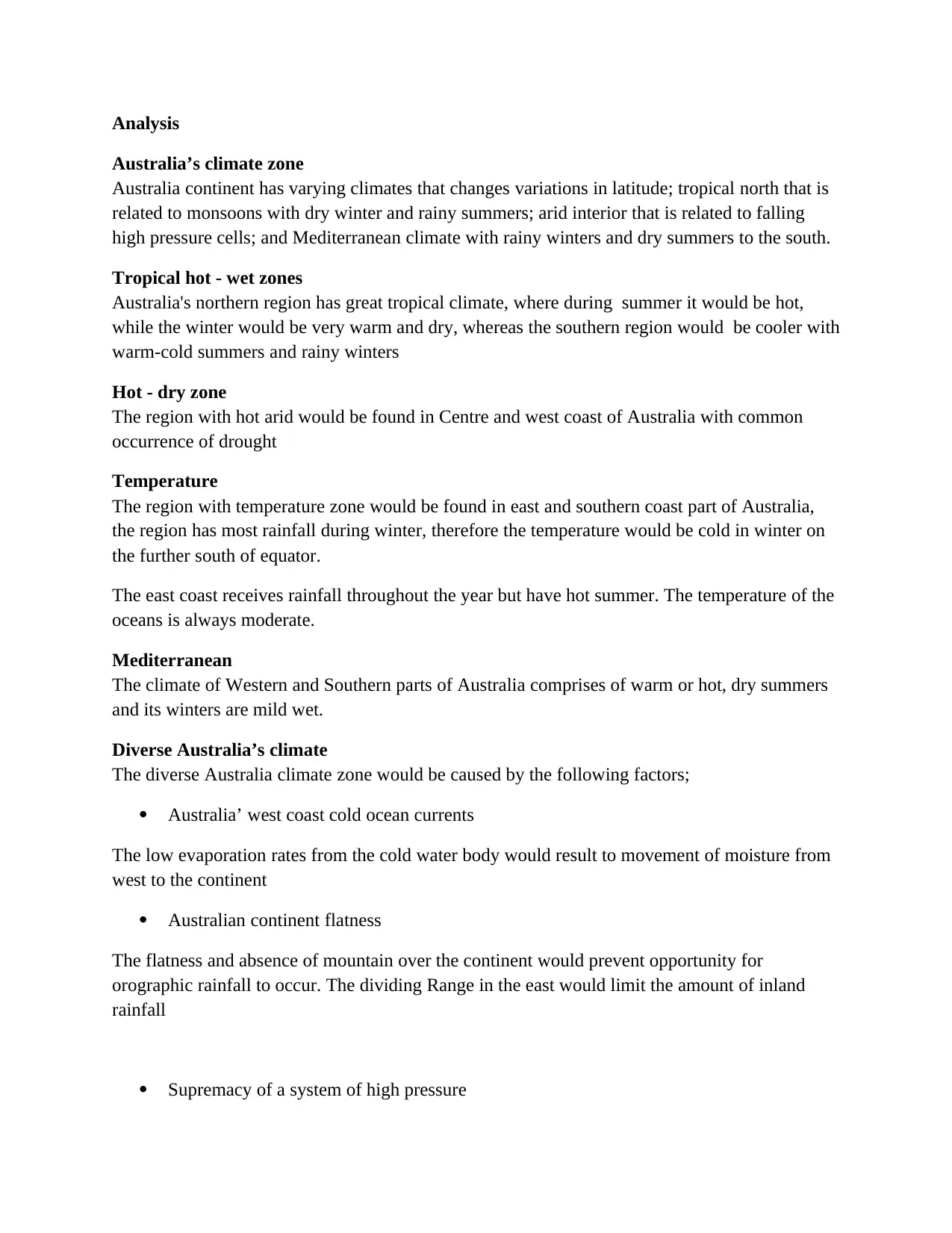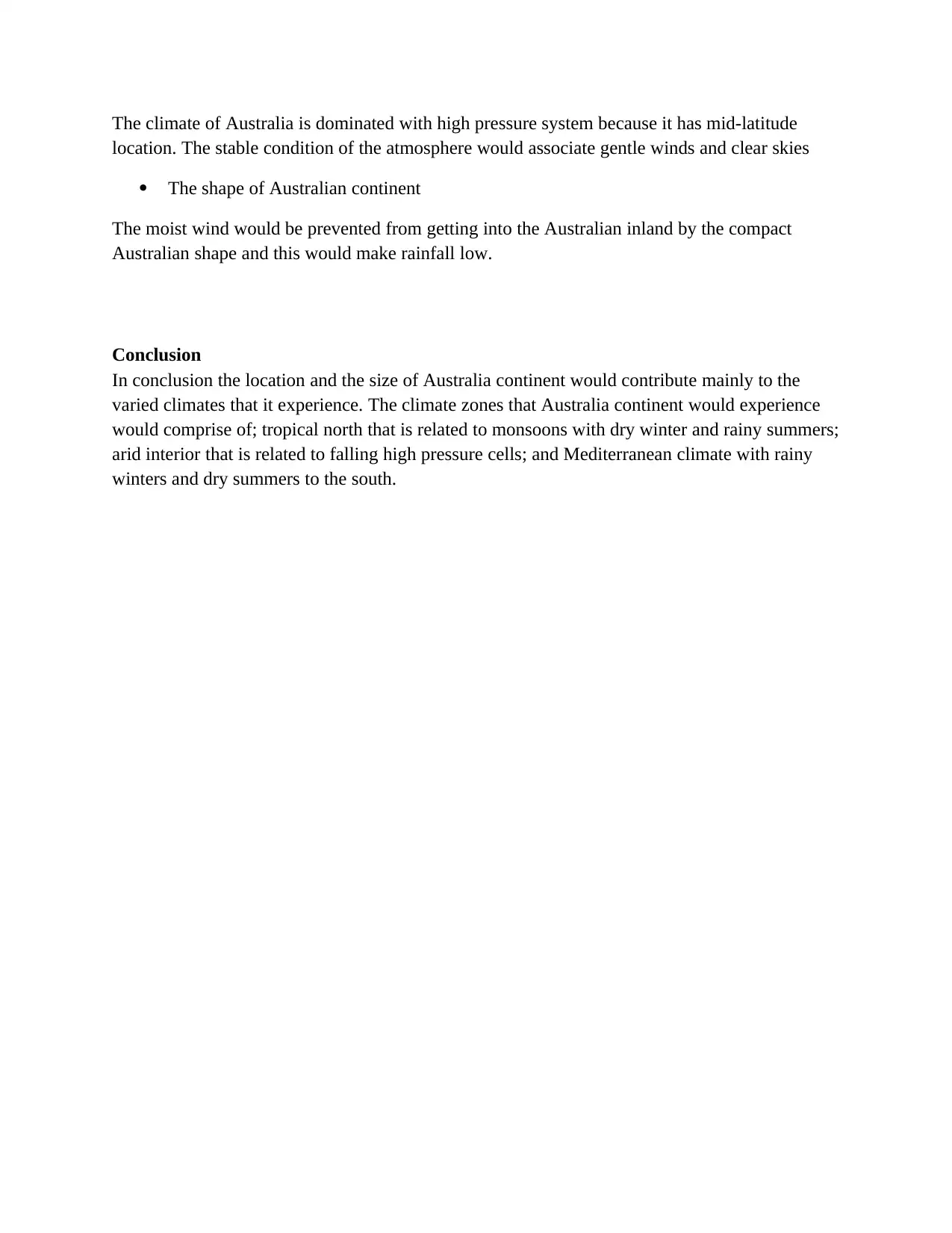Detailed Report: Australia's Climate, Zones, and Influences
VerifiedAdded on 2022/09/01
|3
|685
|15
Report
AI Summary
This report provides a detailed analysis of Australia's diverse climate zones, including tropical, arid, and Mediterranean climates. It explores the factors influencing these climate variations, such as the continent's shape, the presence of high-pressure systems, and the impact of cold ocean currents. The report examines the characteristics of each climate zone, highlighting the temperature, rainfall patterns, and seasonal variations. Furthermore, it discusses how Australia's unique geographical features and location contribute to its varied climates. The conclusion summarizes the key findings, emphasizing the significant role of Australia's size and location in shaping its climate patterns. This report is designed to provide a comprehensive overview of Australia's climate for students and researchers alike.
1 out of 3










![[object Object]](/_next/static/media/star-bottom.7253800d.svg)